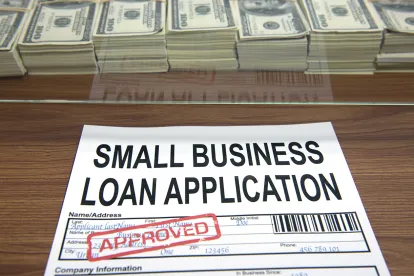On May 15, 2020, the U.S. Department of Treasury (Treasury) and U.S. Small Business Administration (SBA) issued the Loan Forgiveness Application for borrowers to complete in order to apply for loan forgiveness under the Paycheck Protection Program Paycheck Protection Program (PPP), as enacted under the Coronavirus Aid, Relief, and Economic Security Act (as amended, supplemented or otherwise modified from time to time, including, without limitation, by the Paycheck Protection Program and Health Care Enhancement Act, applicable federal regulations and interpretive guidance issued by the SBA and Treasury, the CARES Act). The Loan Forgiveness Application includes a loan forgiveness calculation form and related Schedule A worksheet as well as an optional PPP borrower demographic information form.
Highlights of what we believe to be material new guidance or clarification of existing guidance regarding PPP loan forgiveness are as follows:
I. The Covered Period vs. the Alternative Payroll Covered Period
The Loan Forgiveness Application provides PPP borrowers having a biweekly (or more frequent) payroll schedule with the option to choose between the following two time periods to calculate forgiveness-eligible payroll costs:
-
Covered Period: the 8-week (56-day) period beginning on the date the PPP Loan is funded; or
-
Alternative Payroll Covered Period: the 8-week (56-day) period that began on the first day of the first pay period following the date the PPP loan was initially funded.
PPP borrowers must apply the Covered Period (and not Alternative Payroll Covered Period) wherever there is a reference in the Loan Forgiveness Application to only the “Covered Period”, which is the case for all nonpayroll costs.
II. Eligible Payroll Costs
PPP borrowers are eligible for forgiveness only for the payroll costs incurred or paid during the Covered Period or Alternative Payroll Covered Period.[1] The Loan Forgiveness Application permits a borrower to receive forgiveness for payroll costs incurred but not paid during the Covered Period (or Alternative Payroll Covered Period) if paid on or before the borrower’s next regular payroll date, even if such payroll date occurs after the end of the Covered Period (or Alternative Payroll Covered Period). Payroll costs are considered paid on the day that paychecks are distributed or the PPP borrower originates an ACH credit transaction. Payroll costs are considered incurred on the day that the employee’s pay is earned.
For further information on what constitutes eligible payroll costs under the PPP, please visit our article on the SBA’s April 2, 2020 Interim Final Rule.
Eligible Nonpayroll Costs
Nonpayroll costs eligible for forgiveness consist of:
-
Business Mortgage Interest Payments: payments of interest (not including any prepayment or payment of principal) on any business mortgage obligation on real or personal property incurred before February 15, 2020;
-
Business Rent or Lease Payments: business rent or lease payments pursuant to lease agreements for real or personal property in force before February 15, 2020; and
-
Business Utility Payments: business payments for a service for the distribution of electricity, gas, water, transportation, telephone, or internet access for which service began before February 15, 2020.
The Loan Forgiveness Application confirms that Business Mortgage Interest Payments includes interest on debt obligations secured by either (or both) real and personal property and provides new guidance that Lease Payments cover lease agreements for personal property (e.g., capital leases, operating leases, vehicles, etc.) in addition to lease or rental payments for real property. With respect to Business Utility Payments, the Loan Forgiveness Application permits services for the distribution of “transportation”, but neither the CARES Act nor the Loan Forgiveness Application specifies the types of services that constitute “transportation”.
An eligible nonpayroll cost must be paid during the Covered Period or incurred during the Covered Period and paid on or before the next regular billing date, even if the billing date is after the Covered Period.[2] Eligible nonpayroll costs cannot exceed 25% of the total forgiveness amount.
IV. PPP Loans Greater than $2 Million
The Loan Forgiveness Application requires the PPP borrower to check a box indicating if, together with its affiliates (unless the affiliation rules applicable to the PPP are waived for such borrower), the PPP borrower received PPP loans with an original principal amount in excess of $2 million.
For further information on the affiliation rules applicable to the PPP, please visit our articles on the subject matter here and here. For further information on the SBA’s intended review of PPP loans greater than $2 million, please visit our articles on the subject matter here and here.
V. FTE Reduction Exceptions
The Loan Forgiveness Application provides that a reduction in full time equivalency (FTE) employees resulting from the following cases does not reduce the PPP borrower’s loan forgiveness amount:
-
Any positions for which the PPP borrower made a good-faith, written offer to rehire an employee during the Covered Period or the Alternative Payroll Covered Period which was subsequently rejected by the employee; and
-
Any employees who during the Covered Period or the Alternative Payroll Covered Period (a) were fired for cause, (b) voluntarily resigned, or (c) voluntarily requested and received a reduction of their hours.
In each of the cases mentioned above, a PPP borrower must indicate that the position was not filled by a new employee.
VI. Safe Harbors for FTE Employee Reductions and Salary/Hourly Wage Reductions
The Loan Forgiveness Application clarifies that a safe harbor is available for a PPP borrower that has reduced its FTE employee count notwithstanding that such borrower may have reduced the salary/hourly wages of its workforce, and that a safe harbor is also available for a PPP borrower that has reduced the salary/hourly wages of its workforce notwithstanding that such borrower may have reduced its FTE employee count. In other words, the safe harbor described in the CARES Act for which a PPP borrower may qualify to eliminate a reduction in eligible forgiveness actually consists of two separate and independent safe harbors for which a borrower may qualify, provided that qualifying for either safe harbor will only eliminate the reduction in forgiveness for which such safe harbor is available (i.e., reduction for reduced FTE employee count or reduction for reduced salary/hourly wages), as described below.
A PPP borrower is exempt from a reduction in loan forgiveness for reducing its FTE employee count if both of the following conditions are met: (1) the PPP borrower reduced its FTE employee count in the period beginning February 15, 2020 and ending April 26, 2020; and (2) the PPP borrower then restored its FTE employee count by not later than June 30, 2020 to its FTE employee count in the PPP borrower’s pay period that included February 15, 2020.
A PPP borrower is exempt from a reduction in loan forgiveness for reducing the salary/hourly wages of any of its employees during the Covered Period or the Alternative Payroll Covered Period by more than 25% compared to the level during the period from January 1, 2020 to March 31, 2020 if the PPP borrower eliminates such reduction by June 30, 2020.
VII. Final Forgiveness Amount
Lastly, the Loan Forgiveness Application clarifies how the SBA intends to ensure that eligible nonpayroll costs not exceed 25% of the total forgiveness amount. PPP borrowers are asked to calculate (i) the total potential forgiveness amount, without taking into account the 25% limitation, but after applying all other reductions and safe harbors (the Potential Forgiveness Amount) and (ii) 75% of the total payroll costs during the Covered Period or Alternative Payroll Covered Period, as applicable, before applying any other reductions or safe harbors (the Threshold Payroll Cost Amount). The final forgiveness amount is then identified as the smallest of (a) the Potential Forgiveness Amount, (b) the Threshold Payroll Cost Amount, and (c) the original PPP loan amount.
FOOTNOTES
[1] The Loan Forgiveness Application equivocally states that PPP borrowers are eligible for forgiveness for “payroll costs paid and payroll costs incurred during the [Covered Period or Alternative Covered Period]”. We do not interpret the foregoing as indicating that such costs must be both incurred and paid during the applicable covered period. It is our view that the loan forgiveness calculation is disjunctive between (i) payroll costs actually paid during the period, which are eligible for forgiveness (so long as they have already been incurred) and (ii) payroll costs incurred during the period, which are also eligible for forgiveness whether paid during the applicable covered period or on or before the last day of a pay period. We note that Line Item #1 under the “Forgiveness Amount Calculation” heading in the Loan Forgiveness Application supports this position by requesting the PPP borrower to enter the “total eligible payroll costs incurred or paid during the Covered Period or the Alternative Payroll Covered Period” (emphasis added).
[2] Although not expressly provided, the Loan Forgiveness Application implies that nonpayroll costs that were incurred before the Covered Period will be eligible for loan forgiveness if such costs are paid during the Covered Period.



 />i
/>i
